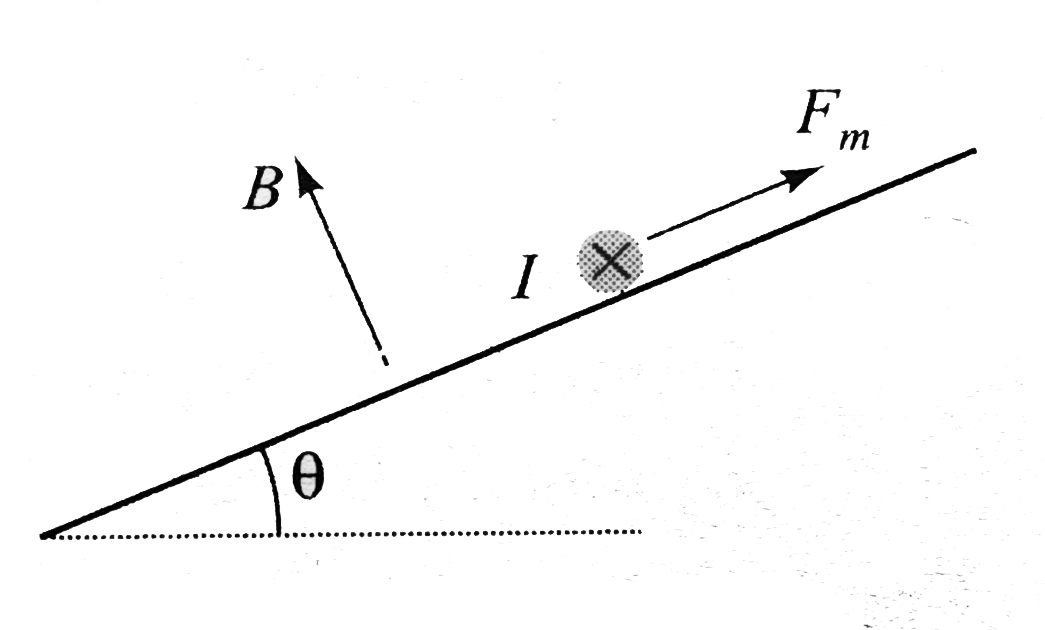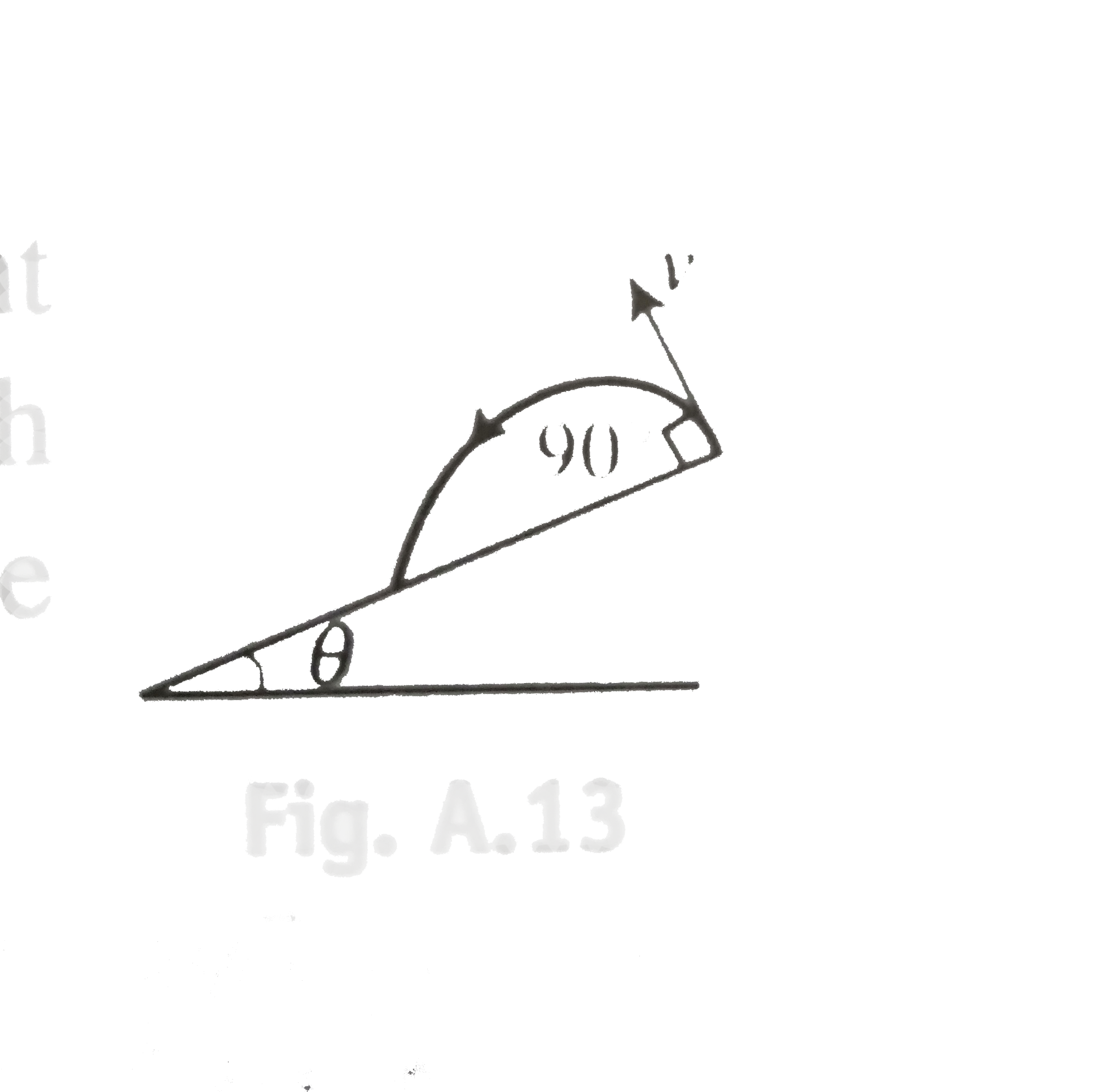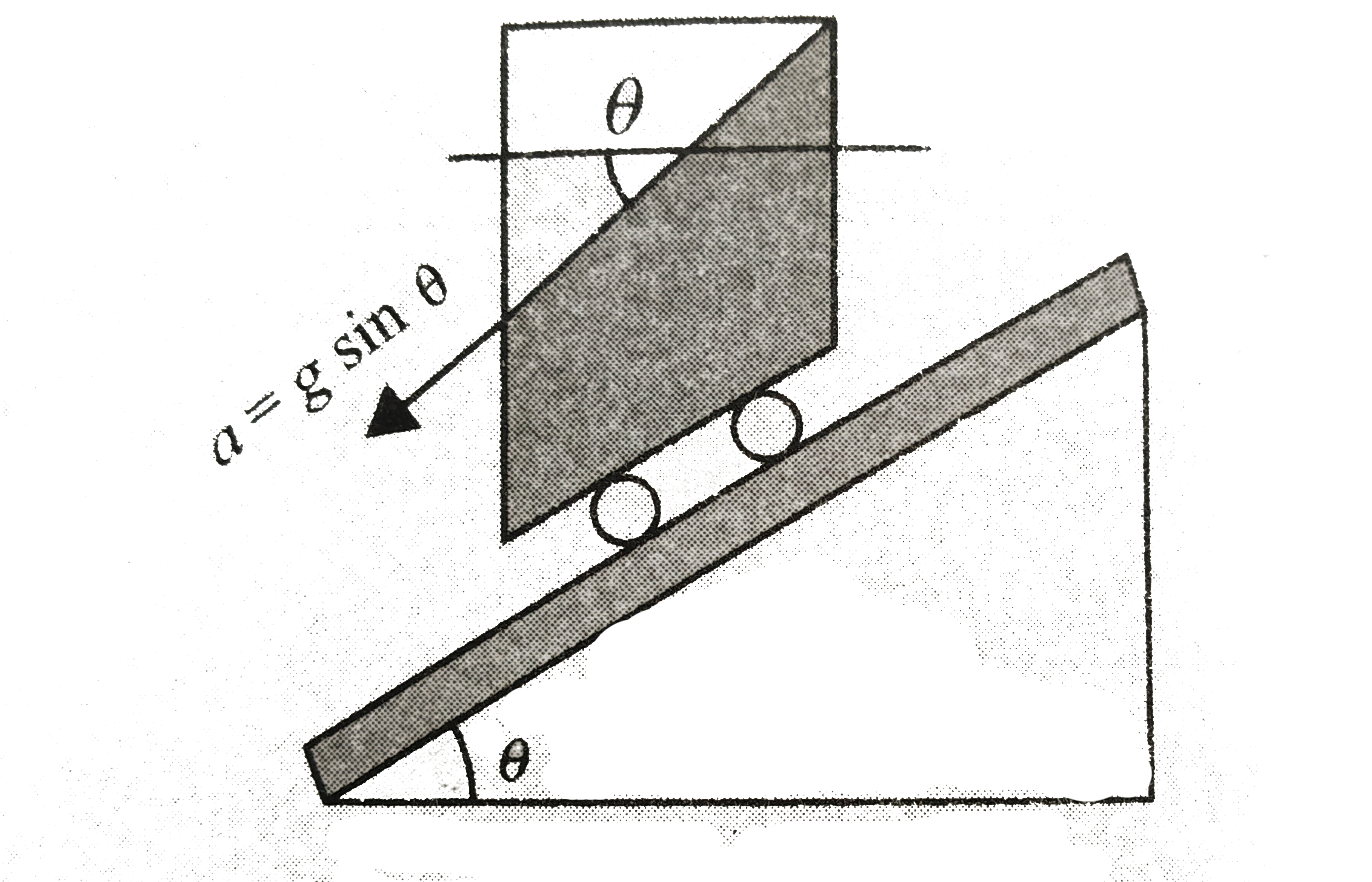A wire of mass m and length l is placed on a smooth incline making an angle θ with the horizontal, whose fornt view is shown in Fig. When a finite amount of charge is passed through it in an infinitesimal time, the wire immediately acquires some velocity and then ascends the incline by a distance s. For this small duration, we can neglect the gravitational force because the current can be considered very large due to small time duration. The amount of charge passed through the wire is

m√2gssinθBl
mvBl
m√2gssinθBlcosθ
information insufficient
The correct Answer is:(a,b)
When a charge is passed through a wire, a current flows in the wire (for a very small time). As a result of this, the wire experiences a magnetic force for a very small duration, i.e., during the time for which charge has been passed through the wire, due to which it acquires some velocity, then onwards, it moves under gravity. For the wire to move up the incline, the positive charge has to pass through the wire in a direction coinciding with into the plane of paper.
Fm=IBl=dqdt×Bl=ma
[For this small duration dt, we can neglect gravitational force because I would be very large due to small passage time of charge.]
⇒mdvdt=dqdt×Bl⇒mdv=dq×Bl
⇒mv=q×Bl
⇒v=q×Blm⇒q=mvBl
where q is the charge passed through the wire and v is the velocity aquired by the wire just after charge had been passed through it.
From kinamatics, v2=2gsinθs
q=m√2gssinθBl

Topper's Solved these Questions
- MAGNETIC FIELD AND MAGNETIC FORCESBOOK - CENGAGE PHYSICS ENGLISHCHAPTER - MAGNETIC FIELD AND MAGNETIC FORCESEXERCISE - Exercises Assertion -reasoning
8 Videos
- MAGNETIC FIELD AND MAGNETIC FORCESBOOK - CENGAGE PHYSICS ENGLISHCHAPTER - MAGNETIC FIELD AND MAGNETIC FORCESEXERCISE - Exercises Linked Comprehension
28 Videos
- MAGNETIC FIELD AND MAGNETIC FORCESBOOK - CENGAGE PHYSICS ENGLISHCHAPTER - MAGNETIC FIELD AND MAGNETIC FORCESEXERCISE - Exercises Single Correct
70 Videos
- INDUCTANCEBOOK - CENGAGE PHYSICS ENGLISHCHAPTER - INDUCTANCEEXERCISE - Concept Based
8 Videos
- MISCELLANEOUS VOLUME 3BOOK - CENGAGE PHYSICS ENGLISHCHAPTER - MISCELLANEOUS VOLUME 3EXERCISE - True and False
3 Videos
Similar Questions
A block of mass m is placed on a smooth inclined plane of inclination θ with the horizontal. The force exerted by the plane on the block has a magnitude
View SolutionA block of mass m is placed on a smooth inclined plane of inclination θ with the horizontal. The force exerted by the plane on the block has a magnitude
View SolutionA force P acts on a smooth block of mass m placed on a horizontal floor at an angle θ with with horizontal on the block

View SolutionA block is placed on a smooth inclined plane as shown . For what value of horizontal force F, the block will remain at rest ?

View SolutionConsider a container having an inclined wall, inclined an angle θ with horizontal as shown in Fig. Calculate the force per unit width on the wall.

View SolutionA projectile is fired with a velocity v at right angle to the slope inclined at an angle θ with the horizontal. The range of the projectile along the inclined plane is

View SolutionA trolley containing a liquid slides down a smooth inclined plane of angle α with the horizontal. Find the angle of inclination θ of the free surface with the horizontal.

View SolutionA conducting rod of mass m and length l is placed over a smooth horizontal surface. A uniform magnetic field B is acting perpendicular to the rod. Charge q is suddenly passed through the rod and it acquires an initial velocity v on the surface, then q is equal to
View SolutionA block of mass m is placed on a rough plane inclined at an angle θ with the horizontal. The coefficient of friction between the block and inclined plane is μ . Ifθ<tan−1(μ) , then net contact force exerted by the plane on the block is :
View SolutionA particle of mass m attached to a string of length l is descending circular motion on a smooth plane inclined at an angle α with the horizontal. For the particle to reach the highest point its velocity at the lowest point should exceed.
View Solution
